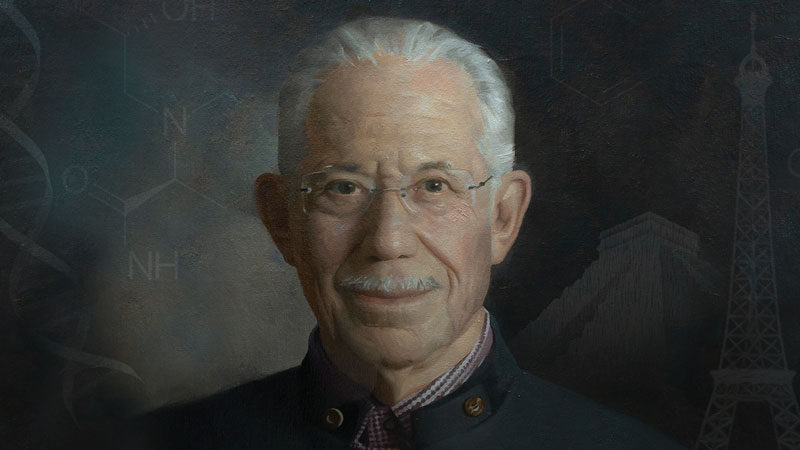A New Approach To Treating Cytomegalovirus
(Posted on Tuesday, September 30, 2025)
Nearly everyone will carry cytomegalovirus at some point in life, but while it stays dormant and harmless in many people, it can be deadly for vulnerable groups. Current drugs only partially control the infection and often come with toxic side effects. A new study in Science Advances suggests a different future: engineered bispecific antibodies that can recruit the body’s own T cells to target and destroy infected cells. This innovation could transform the way we treat one of the world’s most widespread yet underappreciated viral threats.
How Bispecific Antibodies Redirect the Immune System
Our immune system is designed to distinguish between self and non-self and to eliminate invaders, such as viruses and bacteria. Central to this defense are T cells. These cells identify and destroy infected cells. For cytomegalovirus, the immune response is often strong enough to contain the virus but not eliminate it outright. This is where bispecific antibodies come in.
Traditional antibodies bind to one target—usually a virus or bacterium. Bispecific antibodies are different. As their name implies, they can latch onto two different targets at once. In this case, one arm of the antibody binds to an infected cell carrying cytomegalovirus proteins. The other arm attaches directly to a T cell. The antibody acts as a physical bridge, pulling the T cell into close contact with the infected cell and triggering its natural killing function.
Early Trials Point to Hope for Transplant and High-Risk Patients
The Science Advances study tested this strategy in a series of experiments. The bispecific antibodies redirected T cells to seek out and eliminate infected cells with precision. Importantly, this effect did not require engineering specialized T cells in advance. This is typically done with complex cancer immunotherapies, such as CAR-T treatment. Instead, ordinary patient T cells were recruited on the spot by the bispecific antibodies, simplifying the potential clinical use.
Just as crucial, the antibodies did not broadly activate T cells against healthy cells. Off-target damage is a significant concern in immune-based therapies. Uncontrolled immune responses can be as detrimental as the infection itself. Here, the targeting was both controlled and selective, reducing the risk of collateral damage.
Beyond lab tests, bispecific antibodies are showing promise in early trials against cytomegalovirus. These therapies are still in preclinical stages. Animal models have confirmed their potential to reduce viral load and protect against organ damage. Several biotech firms have already launched programs to translate these findings into therapies for human use, with a particular focus on transplant medicine. Transplant patients are among the most severely affected by cytomegalovirus. Up to one-third of organ recipients develop significant complications related to cytomegalovirus. This is because the immunosuppressive drugs they must take weaken their natural defenses. If bispecific antibodies can help these patients maintain control of the virus without heavy drug toxicity, it would mark a significant advance.
Why This Matters
What sets this approach apart is its reliability and scalability. Unlike personalized immune therapies that require weeks of processing, bispecific antibodies can be manufactured in bulk, stored, and delivered like traditional antibody drugs. This means they could be readily available, offering rapid intervention for patients at their most vulnerable. The strategy may also go beyond cytomegalovirus. The same antibody framework could be adapted to redirect T cells against other stubborn chronic infections, including Epstein-Barr virus or hepatitis viruses. In theory, even certain cancers could be vulnerable, as they also rely on evading immune attack.
Over the past two decades, immunotherapy has changed cancer care by harnessing the immune system to target and attack tumors. Until now, similar tactics had not been widely applied to chronic viral infections. The cytomegalovirus bispecific antibody represents a shift in thinking. Rather than trying to suppress viruses indefinitely with drugs, we can train the immune system to do what it was built to do in the first place.
Challenges Ahead
This approach has hurdles. Manufacturing bispecific antibodies is significantly more complex than making traditional antibodies. Ensuring high stability, safety, and predictable behavior in patients will be crucial before regulatory approval can be considered. Long-term studies are also necessary to confirm that redirected T cell killing retains its selectivity and does not diminish over time.
Moreover, cytomegalovirus itself is a clever virus. It is known for evolving evasive strategies and inhibiting immune functions at multiple steps. This could complicate antibody-driven therapies. Research is exploring whether combining bispecific antibodies with vaccines or antiviral drugs might provide the most robust protection.
Even with those caveats, the early clinical implications are exciting. A therapy that can lower cytomegalovirus complications after transplantation could reduce hospital stays and decrease the need for expensive drug courses. Most importantly, it could prevent long-term organ rejection and patient death. These potential benefits translate into a real-world impact for patients and for healthcare systems burdened by the costs of managing cytomegalovirus.
Looking Forward
The development of bispecific antibodies is still in its early days, but the trajectory is clear. Research is rapidly moving from the bench to the bedside. Human trials are anticipated in the coming years. If successful, this strategy could set a new standard for controlling persistent viral infections.
Science advances incrementally, sometimes in small steps and sometimes in leaps. This breakthrough feels much closer to a leap. By directly bridging T cells to infected cells, bispecific antibodies may one day give us the tools to outsmart viruses that have plagued us for centuries.

